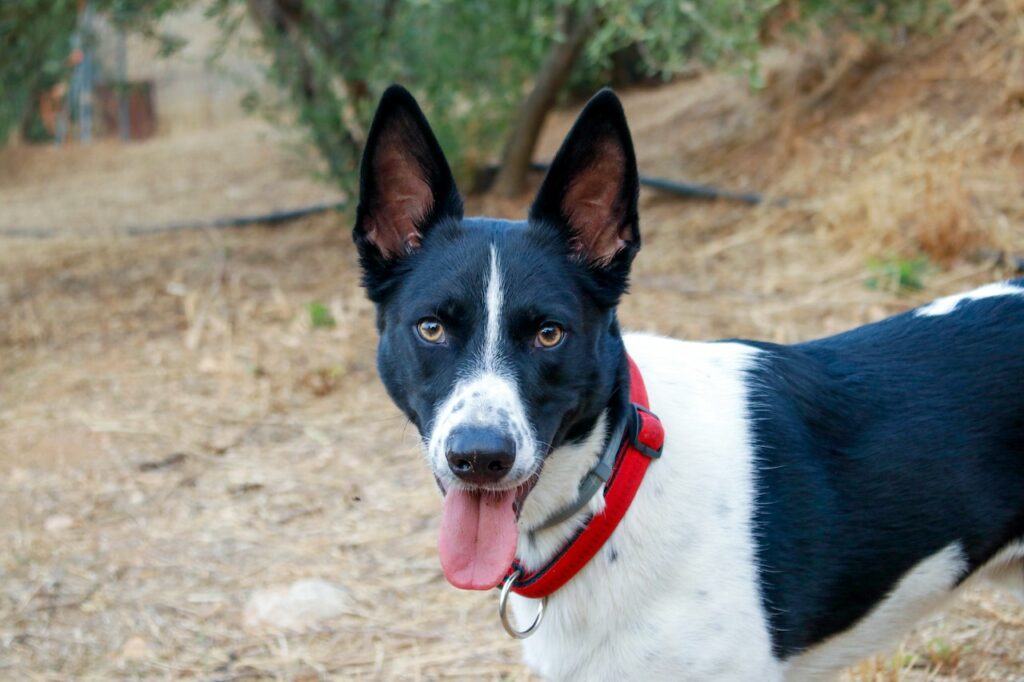Did you know that heat stroke is a life-threatening condition that affects thousands of dogs every year? As the temperature rises, our furry friends become increasingly susceptible to the dangers of overheating. In fact, heat strokes in dogs are more dangerous than in humans due to their limited ability to cool down through sweating.
As temperatures soar, our canine companions become vulnerable to the unforgiving heat, putting their health and well-being at risk. Understanding the facts surrounding heat stroke in dogs is not just informative; it’s crucial for every pet owner.
So, let’s delve into the depths of this topic, unravel the mysteries, and uncover the essential knowledge that will empower us to protect our furry friends from the scorching summer heat.
Symptoms of heat stroke in dogs
Recognizing the symptom of heat strokes in dogs is of utmost importance, as swift action can be the difference between life and death for our furry friends. As temperatures rise, it’s crucial to keep a watchful eye on our canine companions and be vigilant for any signs of distress. Here are some common symptoms that may indicate heat strokes in dogs:
1. Excessive Panting
Dogs regulate their body temperature primarily through panting, as they do not sweat like humans do. Panting helps them release heat by evaporating moisture from their respiratory tract, thereby cooling their bodies. However, excessive panting and difficulty catching their breath can be indicative of a potential heat stroke, which is a life-threatening condition for dogs.
2. Excessive Drooling
Heat-stressed dogs commonly exhibit excessive drooling as one of the signs of heat-related issues. When dogs are exposed to high temperatures or heat stress, their bodies attempt to regulate their internal temperature by producing more saliva. Excessive drooling or having a wet mouth can serve as a red flag that your dog may be struggling with heat-related problems.
3. Lethargy and Weakness
Heat stroke can indeed cause dogs to become unusually tired, weak, or lethargic. When a dog’s body temperature rises significantly, their energy levels can plummet, leading to exhaustion and weakness. If you notice that your dog appears uncharacteristically tired or has difficulty standing or walking, it is crucial to take immediate action as these signs can indicate a severe heat-related issue.
4. Vomiting and Diarrhea
Heat exhaustion in dogs can indeed lead to gastrointestinal distress, which can manifest as symptoms like vomiting and diarrhea. When dogs experience heat stress, their internal systems can be adversely affected, including their digestive system. Vomiting and diarrhea are signs that should never be ignored and should be taken seriously as they can indicate a more severe heat-related condition.
5. Rapid Heart Rate
Heat exhaustion in dogs can indeed lead to gastrointestinal distress, which can manifest as symptoms like vomiting and diarrhea. When dogs experience heat stress, their internal systems can be adversely affected, including their digestive system. Vomiting and diarrhea are signs of heat strokes in dogs that should never be ignored and should be taken seriously as they can indicate a more severe health condition.
6. Glazed Eyes and Disorientation
Dogs experiencing heat stroke may indeed exhibit glazed or bloodshot eyes as well as other neurological symptoms. When a dog’s body temperature rises excessively, it can affect the functioning of the brain, leading to disorientation, confusion, and difficulty maintaining balance. These signs are important to recognize and should be taken seriously as they indicate a severe heat-related condition.
7. Loss of Consciousness
Heat stroke can push a dog’s body to its limits, causing a sudden loss of energy and bodily function. The excessive heat can overwhelm the cardiovascular system, leading to a collapse or loss of consciousness. When a dog’s body temperature reaches dangerously high levels and their internal systems become overwhelmed, it can lead to a critical situation requiring immediate medical attention.
How to treat heat stroke in dogs
Treating heat strokes in dogs requires immediate action to cool their body temperature and seek veterinary assistance. If you suspect your dog is experiencing a heat stroke, follow these steps:
1. Move to a Cool Area
Immediately relocate your dog to a shaded or air-conditioned environment. This will help prevent further overheating and provide relief from the heat.
2. Splash Your Dog With Cold Water
Begin the cooling process by wetting your dog’s body with cool (not cold) water. You can use a hose, wet towels, or immerse them in a bathtub. Focus on the head, neck, armpits, and groin areas as these are where the blood vessels are closer to the surface.
3. Use Fans or Air Conditioning
Turn on fans or air conditioning to enhance the cooling process. Air circulation helps evaporate moisture from your dog’s body and aids in reducing their body temperature.
4. Offer Drinking Water with Ice Cubes and Encourage Them To Drink More
Allow your dog to drink small amounts of cool water or ice cubes. Do not force them to drink, but keep water available for them to hydrate as needed.
5. Monitor Their Body Temperature Constantly
Check your dog’s rectal temperature regularly using a digital thermometer. Stop cooling once their temperature reaches 103°F (39.4°C). Overcooling can also be dangerous, so it’s crucial to strike a balance.
6. Apply Cool Compress To Their Paws and Head
If your dog’s body temperature remains high despite initial cooling efforts, you can apply cool, wet compresses to their groin, paws, and head. This can help bring down their temperature further.
7. Monitor Breathing to Notice Any Difficulty
Keep a close eye on your dog’s breathing. If they are experiencing difficulty breathing or panting excessively, it’s important to seek immediate veterinary attention as this could indicate respiratory distress.
8. Offer Electrolyte Solution
If your dog is conscious and able to swallow, you can provide an electrolyte solution to help replenish the minerals and salts lost during heat stroke. You can find electrolyte solutions specifically formulated for dogs at pet stores or consult your veterinarian for recommendations.
9. Prevent Overexertion and Offer Rest
During the recovery phase, ensure your dog rests and avoids any physical exertion or exercise. Allow them to recover gradually and avoid exposing them to heat until they have fully recuperated.
10. Seek Veterinary Assistance
Even if your dog’s condition seems to improve, it’s essential to contact your veterinarian immediately. Heat stroke can cause internal damage and other complications that require professional evaluation and treatment.
While you take these steps, remember that cooling down your dog is crucial, but avoid using ice-cold water or ice packs. Extreme cold can constrict blood vessels, preventing the body from dissipating heat effectively. Additionally, monitor your dog’s behavior, breathing, and responsiveness throughout the process.
Tips to prevent heat strokes in dogs
Prevention plays a key role in safeguarding our furry friends from this potentially life-threatening condition. By following a few simple tips, we can help ensure our dogs stay cool, hydrated, and protected from the scorching heat. Here are some essential prevention measures to keep in mind to minimize the risk of heat stroke in dogs.
- Never leave your dog in a hot car, even for a short period.
- Avoid exposing your dog to extreme heat or direct sunlight for extended periods.
- Provide ample shade and a well-ventilated area for your dog to rest.
- Always ensure fresh and cool water is available for your dog to drink.
- Avoid strenuous exercise during the hottest parts of the day; opt for early morning or evening dog walk instead.
- Pay special attention to brachycephalic (short-nosed) breeds, elderly dogs, or those with underlying health conditions, as they are more susceptible to heat stroke.
- Be cautious when walking your dog on hot pavement or surfaces, as it can burn their paw pads.
- Consider using cooling mats or vests specifically designed for dogs to help regulate their body temperature.
- If your dog shows signs of overheating, such as excessive panting or distress, move them to a cooler area immediately and provide water.
- Regularly monitor your dog for any signs of heat stroke and seek veterinary attention if you notice symptoms.
Remember, heat strokes in dogs is a severe condition that requires immediate attention. By acting swiftly, providing cooling measures, and seeking veterinary assistance, you can give your furry friend the best chance of recovery and minimize the potential complications associated with heat stroke.
Our dogs rely on us for their health and safety. Let’s ensure they have access to shade, fresh water, and a cool environment. Let’s be mindful of their limitations in dealing with heat and take proactive measures to prevent heat stroke.
Together, we can make a difference and create a summer filled with joy, adventure, and above all, safety for our beloved canine companions. Stay cool, stay vigilant, and cherish the special moments with your furry friends.
















